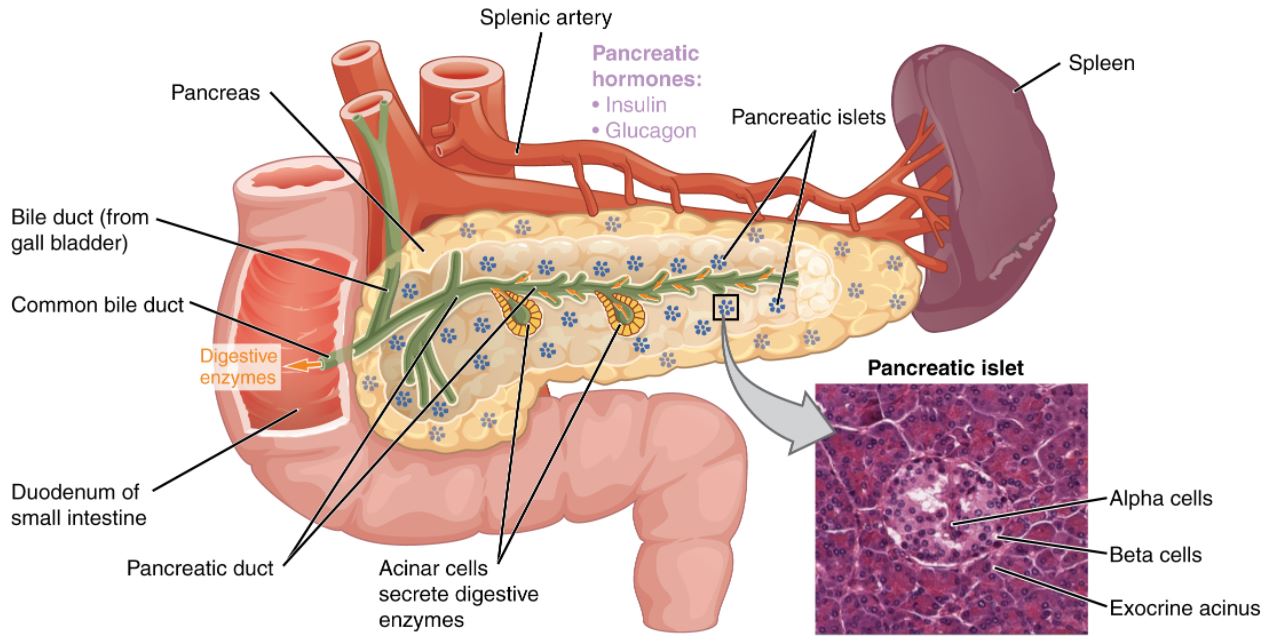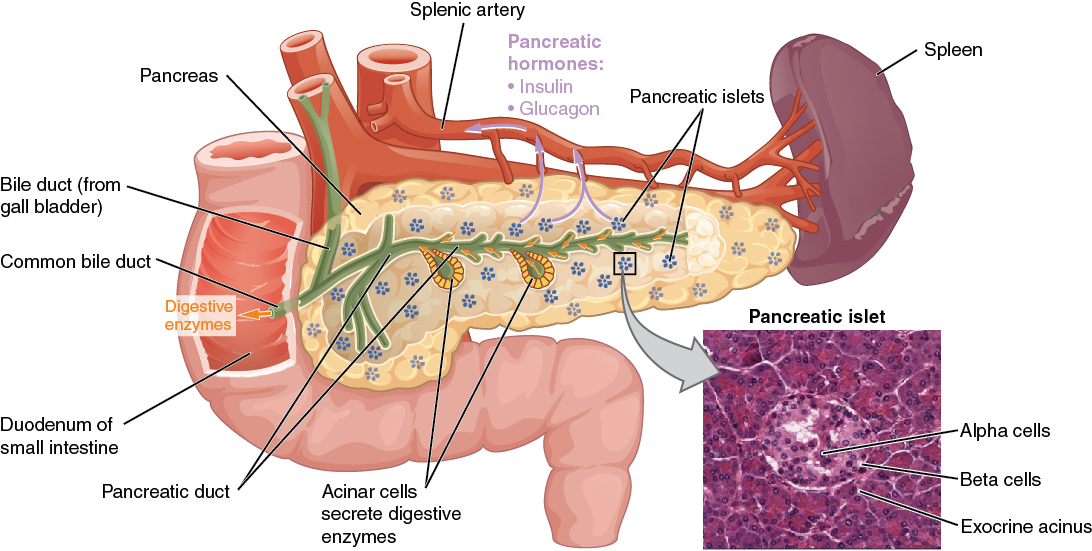Playlist
Show Playlist
Hide Playlist
Diabetes Mellitus: Common Diseases that Predispose to CKD
-
Slides Nephrology Chronic Kidney Disease.pdf
-
Download Lecture Overview
00:01 So some of the common diseases that predispose to chronic kidney disease, again, diabetes mellitus we talked about this before that this is really a number one disease in terms of causing end-stage renal disease within the United States. 00:14 It is a group of metabolic diseases that manifests as hyperglycemia. 00:18 So too much sugar, and it could be caused by either pancreatic beta cell dysfunction. 00:23 So our beta cells in our pancreas don't produce enough insulin, that would be more indicative of type 1 diabetes, which is more of an autoimmune disease. 00:31 Or insulin resistance, which is traditionally more of type 2 diabetes so cells don't respond to insulin. 00:38 About 20 to 30 percent of diabetics will develop diabetic kidney disease or diabetic nephropathy. 00:44 So it's important to really keep note of that and again target that population to hopefully prevent this from happening. 00:51 It accounts for about 55 percent of new dialysis patients. 00:54 And again, I can say that when I walk into my dialysis centers, that's absolutely true. 01:00 Maybe even more than 50% of my patients are there on dialysis because of diabetic kidney disease, so it's a significant burden in terms of chronic kidney disease. 01:12 So again, we're looking at disease manifestations from diabetic nephropathy. 01:17 We can see our pathological image on the right. 01:20 So we've got these diabetic nodules. 01:22 So patient end up with glomerulopathy and that is really characterized by having this mesangial expansion and that's what our arrow is pointing into. 01:30 This is actually the mesangial that's largely been replaced by this matrix kind of going out of control creating these diabetic nodules. 01:39 We also get thickening of the glomerular basement membrane, which we see on a PAS stain as well as on electron microscopy. 01:45 And ultimately over time we end up with glomerular sclerosis or scarred glomeruli. 01:53 So in terms of how patients will manifest clinically it's interesting because the earliest earliest clinical manifestation of disease is probably really not seen to most of us and this means that patients are actually hyper filtering. 02:06 They actually have an increase in GFR and glomerular capillary hypertension. 02:12 If that sustained over time, they start to develop what we call microalbuminuria or really what's more correctly referred to as moderately increased albuminuria. 02:22 That means that urinary albumin level is between 30 and 300. 02:27 Remember we talked about how normal urinary albumin should be less than 30 milligrams. 02:32 Now when a patient has this moderately increased albuminuria, it's very predictive that they have a high risk of progression and future overt nephropathy which means that they'll develop greater than 1 gram of proteinuria and go on to really develop worsening diabetic nephropathy. 02:48 So it's going to be critical in order to Target that population so that we can help prevent that progression from happening. 02:55 So basically, how can we do this or how can we target that population? We have to think about the mechanism that's ongoing. 03:02 These paitents have glomerular capillary hypertension. 03:04 We just talked about how they're hyper filtering so we can use things like RA suppression or ACE inhibitors or Angiotensin receptor blockers to reduce that protein in the urine and reduce the glomerular capillary hypertension. 03:16 We'll talk a little bit more about this later in the lecture. 03:20 We want to make sure those patients have good glycemic control so that A1C should be targeted less than seven percent and then it's important to control weight in our patients if they're obese. 03:30 Now despite our best efforts our patients can still progress from moderately increased albuminuria to overt proteinuria or severely increased albuminuria. 03:39 That means that that urinary albumin level is now greater than 300 milligrams per day. 03:43 And when our patients tend to reach this point, they often times we'll have a progressive decline in their GFR and eventually manifest with end-stage renal disease if they don't have effective therapy. 03:55 Now it's interesting. 03:56 I want to take just a moment to talk about a subset of patients that you might see with diabetic kidney disease but they don't have any or very little albuminuria. 04:04 So we've seen these patients kind of manifest over time and it's very interesting. 04:08 On biopsy they do have evidence of diabetic kidney disease. 04:12 However, they don't really manifest with a lot of albuminuria. 04:16 And it's presumed that they have more intro renal and vascular changes. 04:21 Now the rate of decline in GFR in this particular subset of patients who don't manifest with a lot of protein is quite a bit slower compared to albuminuric patients, they have a more favorable profile as they're moving through clinically. 04:34 Okay. So this is a schematic of essentially what I'm talking about so you can follow the course of patients with diabetes over time. 04:41 So remember at the onset these patients before we can even detect things sub clinically have things going on patients manifest with an increase in GFR, but they may not have protein in their urine yet. 04:55 This then well if not treated will then progress to what we call microalbuminuria or moderately increased albuminuria. 05:02 Remember that's that greater than 30 milligrams of protein or albumin in the urine but less than 300. 05:08 If those patients progress with therapy or in the absence of therapy. 05:13 They then develop overt nephropathy that means they have greater than 300 milligrams of albumin in the urine and that puts them at a very very high risk of losing function. 05:22 So eventually they have a decrease in their GFR. 05:25 And then finally, they transition to end-stage renal disease. 05:29 So therapy in these patients. 05:30 I cannot underscore is absolutely critical. 05:35 So when we think about the pathogenesis of diabetic nephropathy, it's really multifactorial. 05:40 So there's glomerular hyperfiltration. 05:42 We talked about that where that GFR is higher than what it should be in those patients have glomerular capillary hypertension. 05:48 And there's hyperglycemia and these advanced glycation end products. 05:53 We also have elevated prorenin and levels in our patients and then impaired podocytes pacific insulin signaling. 05:59 So quite a few different things actually go into manifestations or the clinical presentation of abetik nephropathy.
About the Lecture
The lecture Diabetes Mellitus: Common Diseases that Predispose to CKD by Amy Sussman, MD is from the course Chronic Kidney Disease (CKD).
Included Quiz Questions
What is the purpose of using angiotensin receptor blockers to treat patients with diabetic nephropathy?
- Decrease glomerular capillary hypertension
- Increase the bradykinin level
- Elevate serum potassium level
- Elevate serum creatinine level
- Increase the glomerular filtration rate
Which histopathological finding is pathognomonic for diabetic nephropathy?
- Mesangial nodules
- Noncaseating granuloma
- Thin glomerular basement membrane
- Eosinophilic-rich infiltrate
What is the earliest clinical manifestation of diabetic nephropathy?
- Microalbuminuria
- Azotemia
- Hematuria
- Nephrotic-range proteinuria
Customer reviews
5,0 of 5 stars
| 5 Stars |
|
5 |
| 4 Stars |
|
0 |
| 3 Stars |
|
0 |
| 2 Stars |
|
0 |
| 1 Star |
|
0 |





